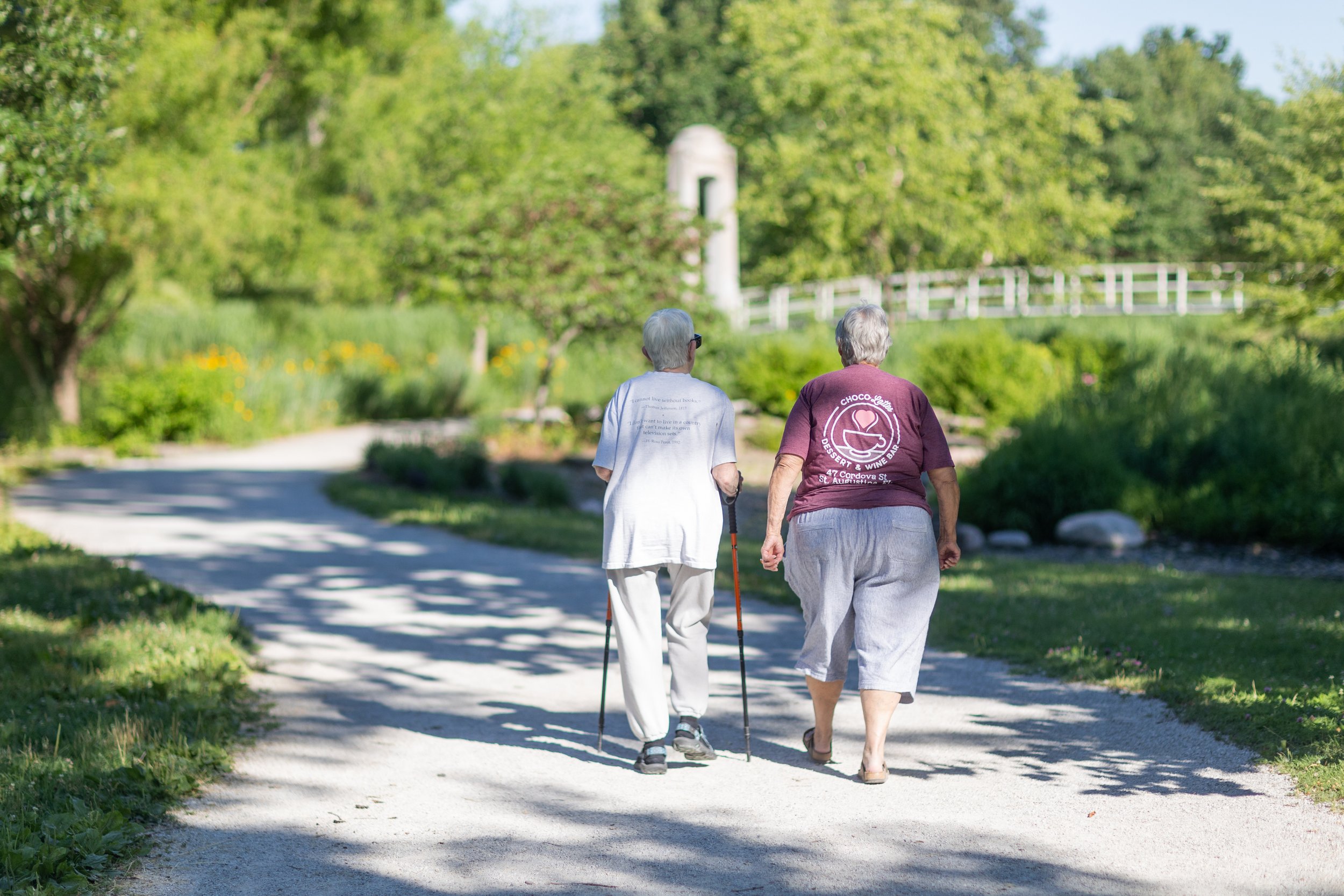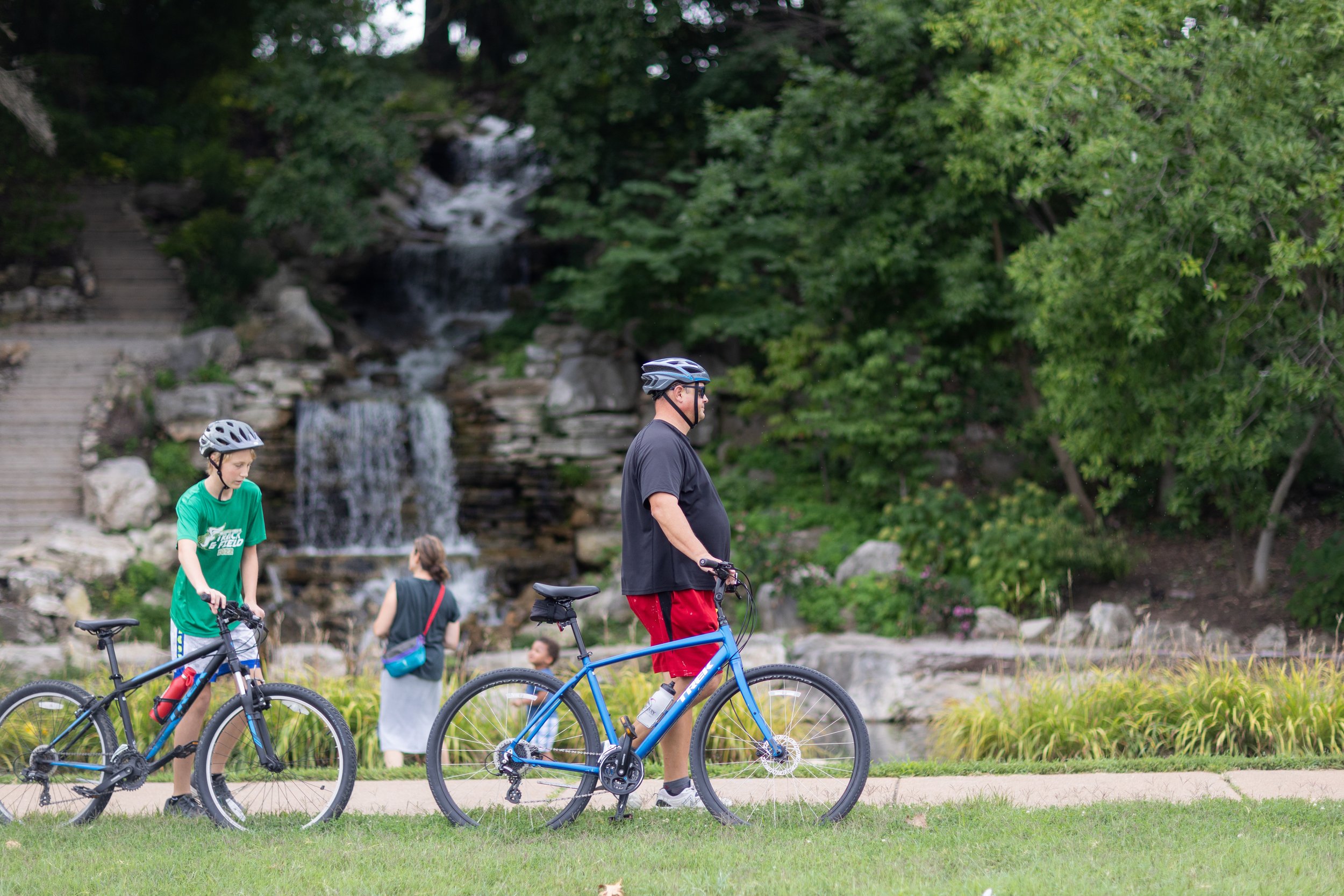How Parks Help Community Health
Can Restoring and Maintaining Forest Park Improve Lives?
Active Ingredients Found in Nature slide from Dr. Charlie Hall’s presentation at the 2022 America in Bloom Symposium and Awards Celebration.
Dr. Charlie Hall, from Texas A&M University, recently presented at the 2022 America in Bloom Symposium and Awards Celebration, confirming that the physical environment affects health, well-being and a person's entire healing process.
Proactive Management is More Successful Than Waiting.
Though it has changed much over time, Forest Park is a living part of our urban habitat, with over 47,000 trees, countless wildflowers, wildlife and insects. Forest restoration around the Park shows that biodiversity is key and proactive management is more successful than waiting until problem spots take over.
Asthma is a lung disease that causes a person's airways to swell, making breathing difficult. According to the Centers for Disease Control and Prevention (CDC), the disease affects about one in 13 U.S. Americans.
A study of nearly 50,000 New Zealand children finds that those who live in green neighborhoods are less likely to develop asthma. Published in the Nature Plants journal, this study is the first to indicate that plant diversity can protect against a specific adverse health outcome.
“Our results show that biodiversity conservation isn’t just an ecological issue; it also provides concrete health benefits.”
Trees and Shrubs Purify the Air.
Forest Park Forever Land Management Team unloading trees for the Park.
Forest Park Forever Horticulturists and Stewards actively manage over 16,000 trees–intentionally selecting them for many reasons like providing shade, minimizing particulate pollution, providing oxygen and framing our views and other sensory experience of our surroundings.
Continuous stress and pollutants in any community can have long-lasting impacts. Dr. Hall estimates that air pollution reduces life expectancy by seven to eight months. Green spaces can improve air quality because trees can cut particulate pollution by as much as 25%, maybe more.
The U.S. Forest Service calculates that over a 50-year lifetime, one tree provides $62,000 worth of air pollution control. One acre of tree cover absorbs 2.2 tons of carbon per year. In areas in Forest Park such as Kennedy Forest and Successional Forest, trees can remove as much as 15% ozone, 14% sulfur dioxide, 8% nitrogen oxide and 0.05% carbon monoxide from the air.
Shade from a Tree is a Good Thing.
The living world and its systems are complex. Look at any spot on the 30 miles of paths and bike trails in Forest Park or the steps and sidewalks on Government Hill, and you will see people using the Park to be more physically active. However, various factors determine good health, including the quality of the physical environment.
According to the Environmental Protection Agency (EPA), shaded surfaces may be 20-45ºF cooler than unshaded and the evapotranspiration by trees and vegetation can help reduce summer temperatures by another 2-9ºF.
“By absorbing carbon dioxide and pollutants that are fueling climate change, Forest Park helps offset the warming effects, making St. Louis cooler during the summer.”
Nature is the Key to Stress Management and Recovery.
Dr. Hall aligns with the psycho-physiological stress recovery theory that deems a person viewing the beauty of nature as being key to stress management and recovery.
“The response from looking at greenery causes a rapid reduction in blood pressure, muscle tension, and pulse rate, usually within minutes of natural exposure. It is most apparent when the body is already stressed. ”
Dr. Hall found that quality of life improvement due to vegetation was independent of income levels or other socio-demographic characteristics. His evidence links preserving natural spaces to positive effects in urban habitats and decreased health inequalities in people.
The outdoor environment impacts mental health. The Land Management team at Forest Park Forever works year-round to improve habitat quality around the Park for plants and living creatures like pollinators, migratory animals and you.
Whether you jump for joy at the Anne O'C Albrecht Nature Playscape, find a restorative moment listening to the Deer Lake Riffles, or watch the seasons transform along a trail, Forest Park provides a positive environmental impact for all visitors to enjoy.
The Answer is Yes!
Thanks to generous members and donors who fund our ability to restore native habitat in 170 acres and maintain over 1,300 acres of green space, the answer is yes! Dr. Hall's research shows that restoring, maintaining and sustaining natural environments like Forest Park can positively impact our region and improve a person’s overall quality of life.
Not part of the Zoo-Museum Tax District, Forest Park Forever depends on private support to fund care and maintenance in the Park each year. Will you become a member or make a donation to help our team continue caring for Forest Park as the heart of our region?
Overview of Evidence slide from Dr. Charlie Hall’s presentation at the 2022 America in Bloom Symposium and Awards Celebration.








